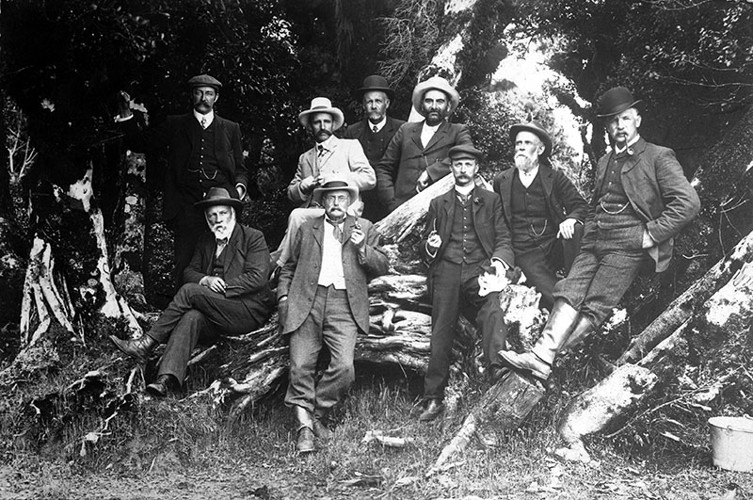
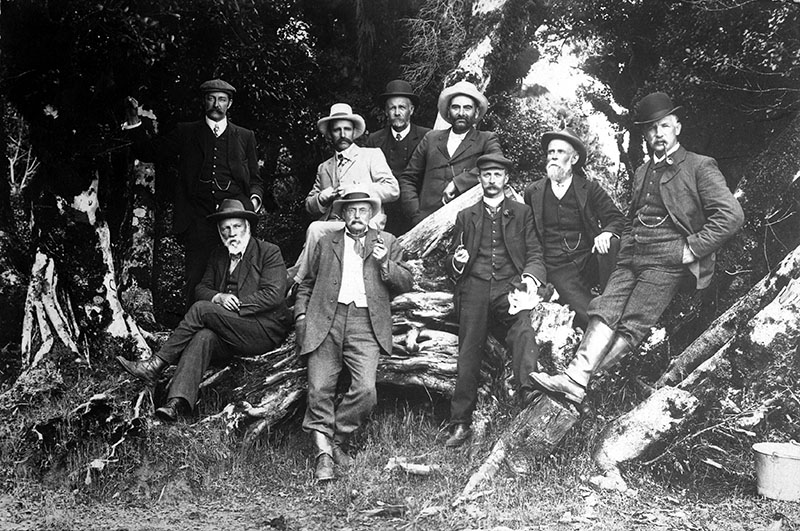
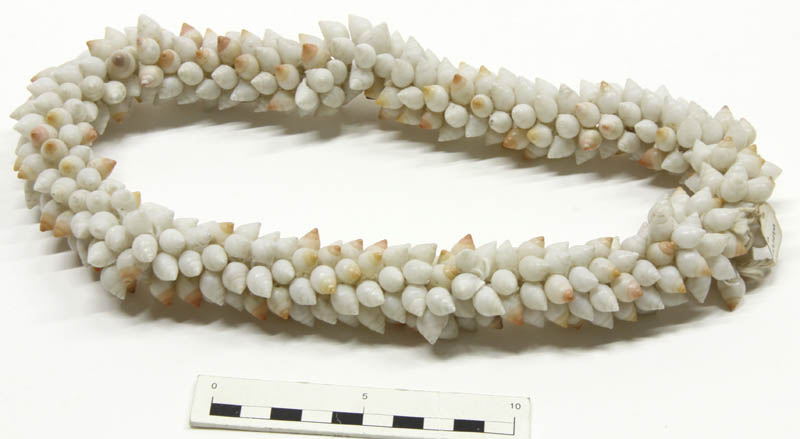
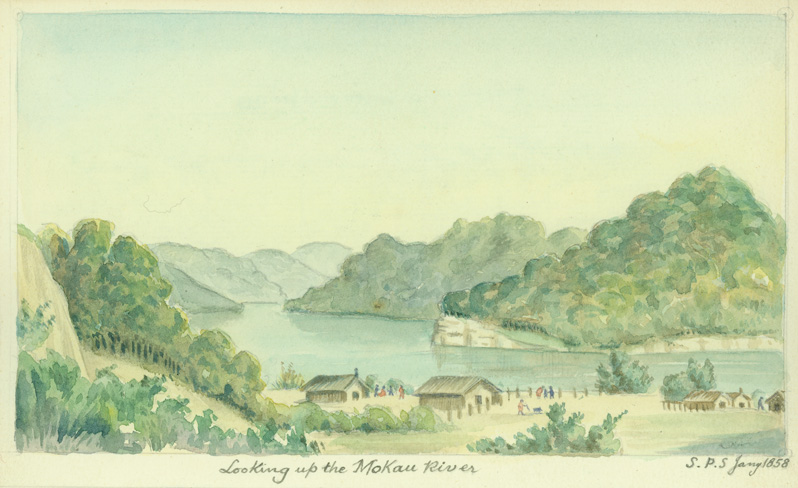
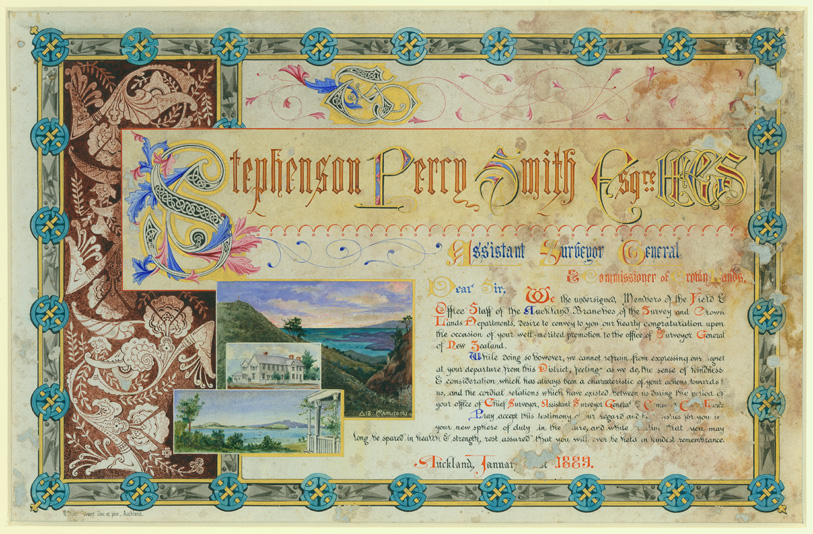
Percy Smith must have loved the bush because he spent much of his working life surveying it and his spare time exploring it. He helped subdivide land around New Plymouth and spent long periods of time in isolation, mixing with Māori.
Born in Suffolk, England, in 1840, Smith sailed to New Zealand on the Pekin in February 1850. He lived from the age of ten on the family farm at Ōmata. At 14, he gave up school to work on the land, taking painting lessons from artist John Gully, before joining the Provincial Survey Department under Octavius Carrington.
As well as paid surveying work, Smith explored everywhere he could. He made the fifth ascent on Taranaki and in 1858, set out with four others on an arduous two-month trek into the heart of the North Island, beating Ferdinand Hochstetter and Juluis Haast into the interior.
An enthusiastic hiker, Smith enjoyed another ambitious journey along the banks of the Mōkau River to Ōhura, down the Whanganui basin, across to Lake Taupō and through the Rangipō desert. By the time they made it home, he and the rest of the party had walked 800 kilometres, canoed 70 kilometres and ridden almost 100 kilometres on horseback.
Smith was there during the lead-up to the Taranaki Wars and in 1857 served on the local militia and witnessed fighting at Waitara the following year. As surveyor and topographer, he took on the task of making sketches of the stockades.
When called in by the Land Purchase Department to survey the recently acquired government land in the Kaipara district and northern Wairoa, he became interpreter and go-between when Ngāti Whātua were approached to help defend Auckland against the Waikato tribes.
At 23, Smith married Mary Ann Crompton, daughter of W.M. Crompton. A Taranaki editor, schoolmaster and provincial representative of New Plymouth, Crompton would one day write a small biography of Smith.
The couple lived in Auckland for the next few years, but once back in New Plymouth, they produced four children and Smith began survey work in Waiuku, Taranaki and Pitt Island. He also surveyed large tracts of land in the North Island and was present in the Chatham Islands when Te Kooti made his escape to Poverty Bay.
Smith made two visits to Tarawera after the eruption of 1886 - one to make a hasty survey and the other to provide more details. The following year, he sailed to the Kermadec Islands. Such energetic work habits saw Smith rise through the civil service ranks to become Surveyor General and Secretary for Lands and Mines, positions he would hold until he retired in 1900.
From his earliest years, Smith had been keen on Māori language and customs, and throughout his long life, he recorded every snippet of tribal history and mythology he could find. His work provided a valuable springboard into ethnological knowledge and debate. Through meticulous recording, verified by chasing all possible angles, Smith made an invaluable contribution to New Zealand native archival history.
Although some points have since been challenged and corrected, the basis of his studies remains unchanged. It seems Smith might sometimes have based his concepts on slender evidence, but his writings were of such a high standard for the times, they provided a touchstone for future generations who sought a better understanding of Māori lore.
The Polynesian Society was founded in Wellington in 1892, at a meeting chaired by historian Colonel W.E. Gudgeon. Initially, the membership stood at 112 but later peaked at 1300.
The Journal of the Polynesian Society was produced - a much needed forum where scholars discussed their ideas and indulged their fascination for all things Māori. As first co-editor, alongside Edward Tregear, Smith was the main contributor until he died.
Future editors included W.H. Skinner, H.D. Skinner, Elsdon Best and many others. Presidents included Smith, Sir Āpirana Ngata and J.M. McEwen. The headquarters were based in New Plymouth from 1901 until 1925, when they shifted to Wellington.
Because it was commonly thought that the Māori race was dying, Smith aimed to preserve as much traditional knowledge as he could. During his 30-year association with the Polynesian Society, he published a raft of articles, books and pamphlets on Polynesian history. A full series of the Journal is housed at Puke Ariki. It is regarded as the richest source of information on the people of Polynesia, Melanesia and Micronesia.
In New Plymouth, Smith served on many local boards, including Public Trust, Government Life and Taranaki Native Reserves and became Chairman of the Board of Land Purchase Commissioners. Even when he retired, he stayed active in government affairs.
In 1901, he journeyed to Niue to help draft a constitution after the island's annexation from New Zealand. He made the most of the five month visit by collecting data on the people there, which resulted in two further publications.
In 1922, Stephenson Percy Smith passed away at Matai Moana, his home near the race course at New Plymouth. His life was characterised by endeavour and hard work, and his contemporaries considered him the foremost Pākehā scholar of Māori lore.
Puke Ariki Heritage Collection: S. Percy Smith
LinkPlease do not reproduce these images without permission from Puke Ariki.
Contact us for more information or you can order images online here.